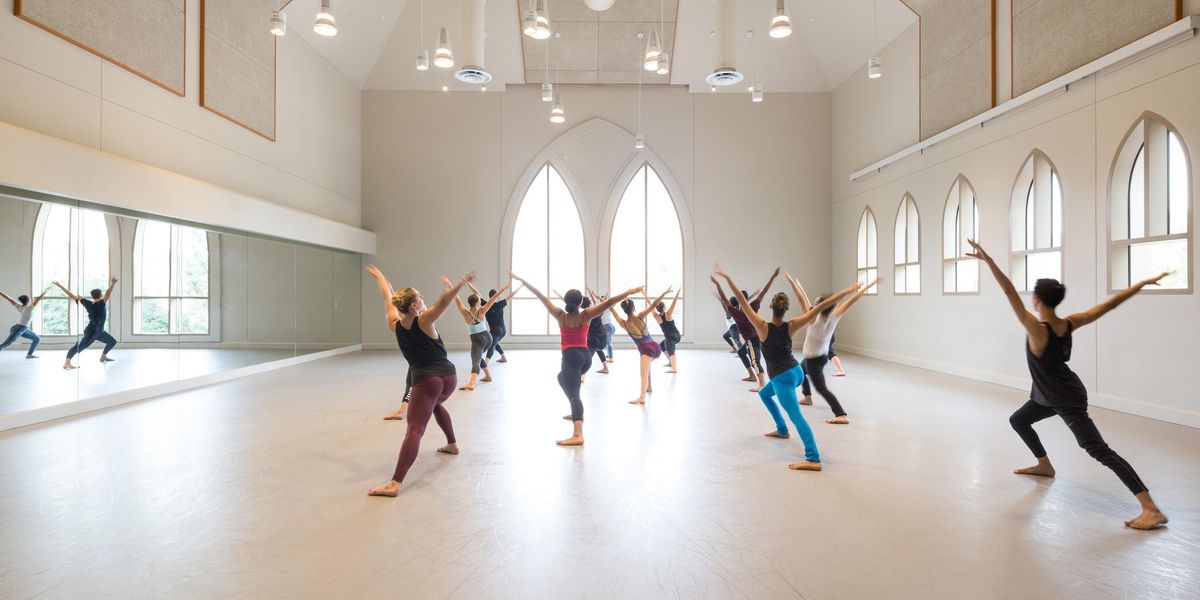On Broadway
All steamed up: Kathleen Marshall’s new
Pajama Game salutes Fosse’s classic moves.
The way the story goes, it was Jerome Robbins who suggested to his co-director, George Abbott, that they give the job of choreographing their 1954 show Pajama Game to a newcomer named Bob Fosse.
While the show could certainly have coasted into a nice long run strictly on its other merits, it was Fosse’s dance sequences that had the audience cheering on opening night. And the showstopper—that night and every night thereafter—was a little throwaway number salvaged from the trunk of the composers, Richard Adler and Jerry Ross, as a replacement for a song that wasn’t working.
The show was about labor problems in a sleepwear plant, and the second act began with a union rally. When the rally song failed to ignite, it was replaced with “Steam Heat”—a jazzy ditty about how having a working radiator is no substitute for love. It had nothing to do with the plot, but Fosse’s now-familiar, then-novel crunched-in postures and compressed steps reliably brought down the house and made stars of the three unknowns who danced it: Carol Haney, Peter Gennaro and Buzz Miller. Wearing identical black suits and bowlers, the three lifted their hats, popped their shoulders, and clapped their hands to the song’s catchy staccato rhythms. And “Steam Heat”—repeated regularly on television shows of the period, frozen forever in the 1957 film version featuring Haney, Miller and Fosse himself—became one of the most famous, most-seen Broadway dance numbers ever.
Now skip forward a half century or so, to a tech rehearsal of the brand-new 2006 edition of Pajama Game starring Harry Connick, Jr. The March opening is still a couple of months away, but previews are due to begin in several weeks, and Joyce Chittick, David Eggers, and Vince Pesce are doing the Kathleen Marshall version of “Steam Heat” in the American Airlines Theater for the first time. Chittick picks up the story: “Being on the stage, with the lights hitting us, doing it for the first time, you could just feel how famous this number is. Everybody knows ‘Steam Heat.’ I was like, ‘OK, now it’s getting a little nervewracking.’ ”
Nervewracking doesn’t quite go far enough to describe Eggers’ state of mind. “I turned to Joyce and Vince and I told them that come our first preview, I’d probably be throwing up backstage. I get such terrible butterflies just thinking about doing it.” Eggers, who graduated with an acting degree from Northwestern, never saw Pajama Game until it was done at Encores a few seasons back. “But I feel like I grew up with this number,” he says.
Pesce, who had worked with Marshall as the associate choreographer on the show and who is, at 39, the most experienced of the three dancers, had a much calmer take on the whole thing.
“You have to head into it without being insecure or scared,” he says he told them. “It’s a little scary. It’s an amazing number I’ve grown up seeing. But as a professional dancer, you have to be competitive: ‘I wanna show you what I can I do.’ ”
That was also the spirit that guided Marshall when she was deciding how to deal with the large shadow cast by Fosse, even in this, his first Broadway show. The first decision was whether to stick with the original Fosse choreography or start from scratch. Marshall, who is directing as well as choreographing, decided that if replicating the Fosse steps was the idea, the producers would have hired someone with a lot more Fosse experience than she had.
But even once the decision to re-do the Pajama Game choreography had been made, the question of “Steam Heat” remained. Since the song is an entertainment, irrelevant to the characters and the plot, there were no requirements that it be performed in a particular way or by a particular character. Should they stick to the two-boys-and-a-girl format of the original or make it a number for a larger group of dancers? Should they radically transform the number so that it bears no resemblance to the original or just put their stamp on a classic? “After a lot of thought,” says Pesce, “we decided to go with the trio, two boys and a girl. Audiences have certain expectations about ‘Steam Heat,’ and we wanted to satisfy that. We didn’t want to go in the other direction, completely changing it, because that would be like saying that what Fosse did originally was not right. So we decided to start with the bowler hats and the suits and take it from there.”
In the original production, Carol Haney played the factory boss’ secretary, and Marshall wondered why she would be showing up to entertain at a union rally. Now, “Steam Heat” is sung by Mae, one of the factory workers. And the song represents more than just a rousing anthem. Chittick, 32, who grew up in Maine and took her first classes at the Bradley Adams School of the Dance in Skowhegan, says, “Now the number is part of the story line about this character’s progression, about her coming out of her shell.”
That’s not entirely a metaphorical image. As the number goes on, and the temperature rises, the hats come off. The jackets come off. The Fosse unisex look devolves into something of a strip tease.
“It gets very exciting and very explosive,” says Eggers, 35. “It’s not as contained as the Fosse, it’s not all unison. And we use a lot more of the stage.”
“You’re not gonna see hat tricks,” says Chittick, alluding to the hats in the original number. “But I feel Bob Fosse is smiling down at us. Because Kathleen pays respect to him and then makes it her own.”
Sylviane Gold has written about theater for
Newsday and The New York Times.




